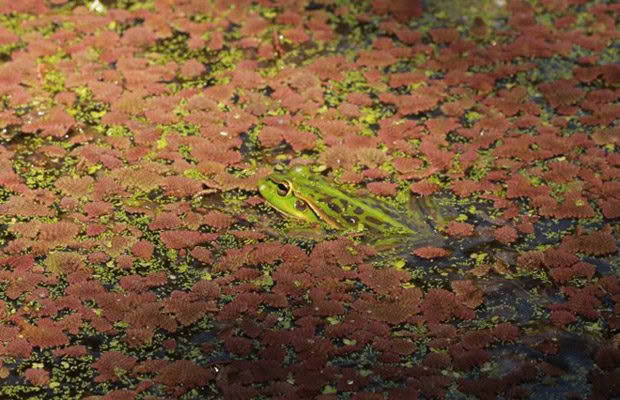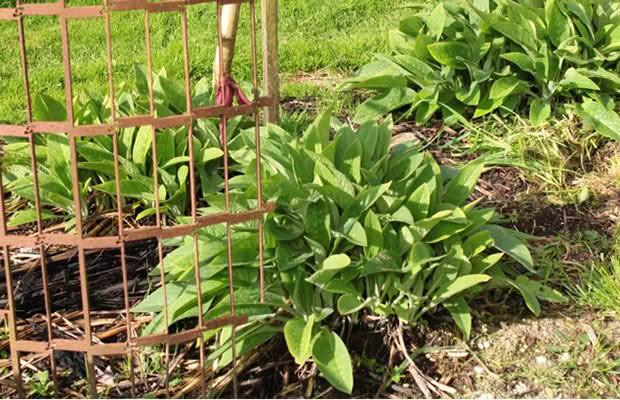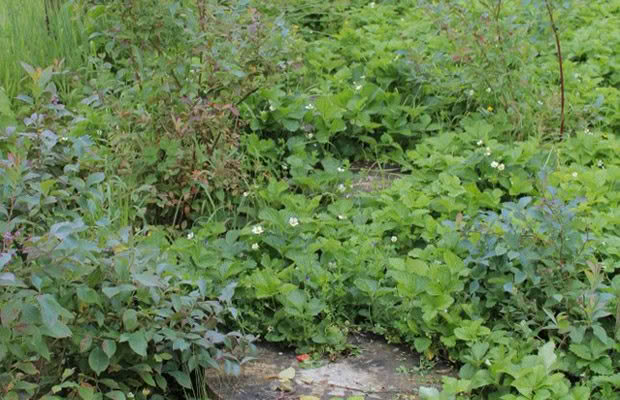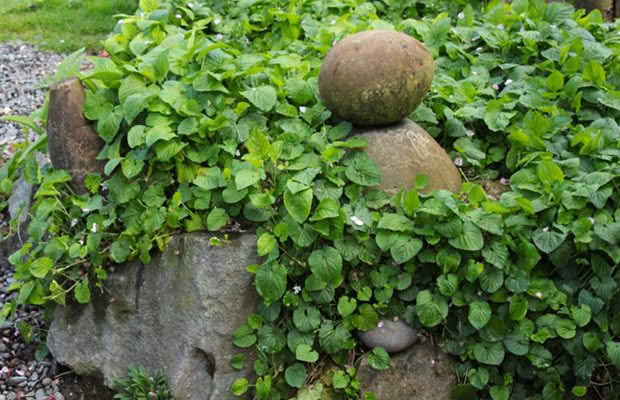Rebecca Stewart: Nature will do what nature does

Words: Rebecca Stewart Images: Summer Stewart
Each garden has different friends and foes and what works for one person might be a curse for another, writes Rebecca.
The frogs are back, their husky croaks emerging from the muddy edges of the pond. The sound takes me back to childhood, watching the little frogs hop amongst the reeds and puggy hoof prints around our pond. But the southern bell frogs we have here are much larger and louder than those tiny critters. It is another sign that the landscape is warming and awakening from its slumber. Like the first of the delicate white clematis blooming on the ravine’s edge and the bellbird gorging on the peach blossoms.
The comfrey too is emerging from its dark winter bed, sending up furry shoots which open into broad green leaves. This must be one of the most functional and beneficial plants in our garden. Comfrey surrounds most of our fruit trees as a living mulch, over the warmer months its lush growth protects and cools the surrounding soil. It helps keep the moisture in the earth, sheltering it from the drying sun and winds. But the growth is so rampant that there is also ample for us to harvest to build our summer composts or brew nutritious teas to feed the surrounding gardens and pasture.

The thick roots of this vigorous plant pull up nutrients from deep in the soil, accumulating them in the leaves and stems, which are then released as the plant is harvested or dies down again. It creates a cycle of life which supports the nearby trees, enhancing their health and turning the surrounding soil into a dark living ecosystem. Even after the leaves have withered in the cold of winter, the soil remains covered with the organic matter of decaying leaves and stems. Weeds are barely an issue and easily removed if they do appear. It is plants and systems like these that make our lives easier and promote health across our land.

In other areas we use different ground covers, each has its own purpose. In the shadier spots, the fragrant violets and deep-toned ajuga spread a shallow carpet across the soil. Their light presence on the land makes them a great perennial cover under shallow-rooted plants such as citrus or currants and they too are edible. And the wild strawberries join their acid-loving friends the blueberries in a sweet, tasty chaos. But some plants soon become menaces. The cress which I thought would be a great living groundcover in the vege garden, seeds at such a prolific rate it invades rapidly and relentlessly. It is easy to remove but almost instantly replaces itself with the next generation outpacing the useful seeds which I am trying to establish.

It is these things we learn as we develop and grow our gardens. Each area has different friends and foes, what works for one person might be a curse for another. Nature abhors bare land and will attempt to cover it with whatever means possible. If we just remember this, we can work with her and not fight against her. Just as our frogs are happy as the pond weed spreads across the water’s surface and the water lilies give shelter from the heat of the day. Their raucous calls remind us that nature will do what nature does and our lives will be easier if we can live within that.
Learn more about ‘Edible Perennials’ in our latest Fodder Farm handbook available from ThisNZlife store, Fodderfarm.co.nz or selected bookstores. For more insight into living a self-sufficient life, ‘Life on Fodder Farm – a Journey to Self-Sufficiency’ is available in all good bookstores now.

